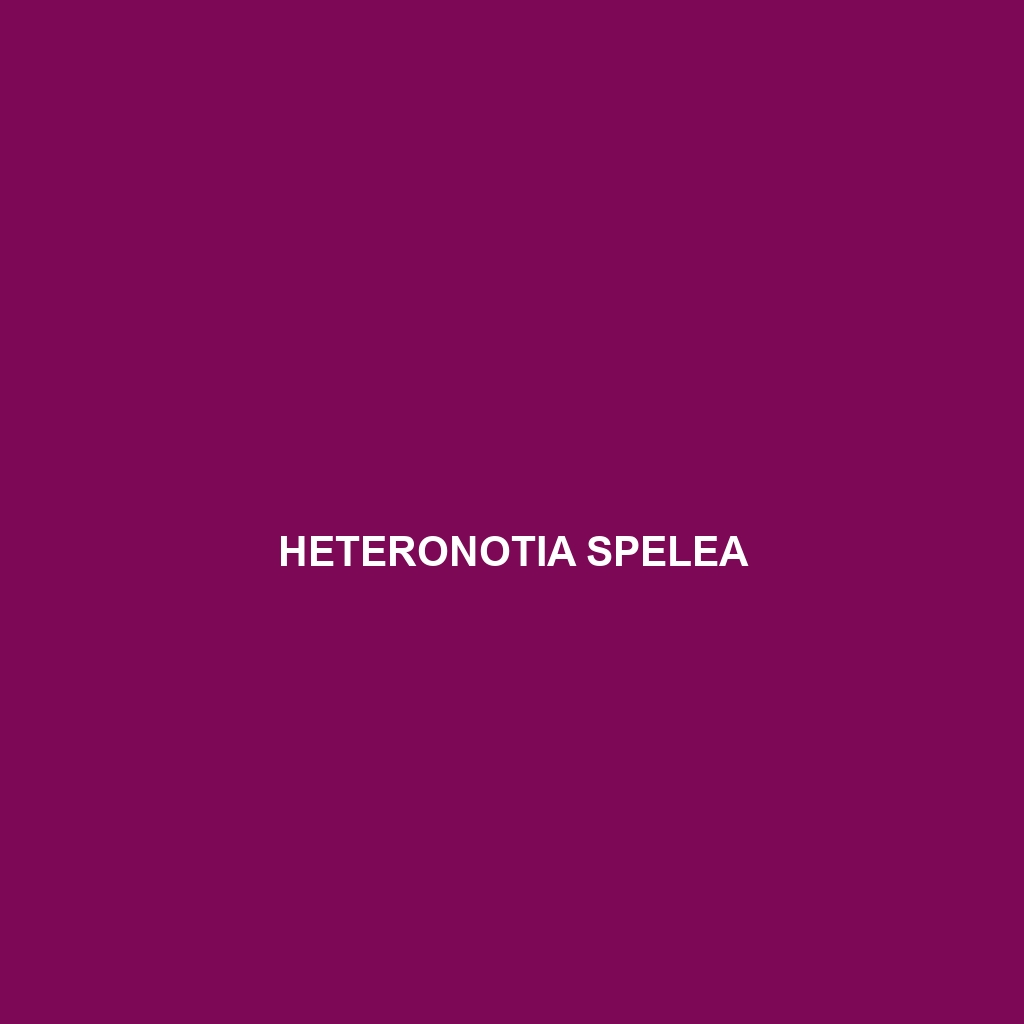Common Name
Heteronotia spelea
Scientific Name
Heteronotia spelea
Habitat
The Heteronotia spelea, commonly referred to as the Cave-dwelling Gecko, is primarily found in the arid and semi-arid regions of northern and central Australia. This species thrives in diverse habitats, including dry forests, scrublands, and caves that provide shelter from the harsh environmental conditions. Geographically, it is prevalent in areas characterized by warm climates, receiving minimal rainfall, which makes the rocky outcrops and secluded caves essential for its survival. These unique habitats not only offer protection from predators but also maintain a stable temperature and humidity, crucial for the well-being of Heteronotia spelea.
Physical Characteristics
The Heteronotia spelea typically measures about 10 to 15 centimeters in length. This species exhibits a slender body with a long, flattened tail, which aids in balance and maneuvering while climbing. Its coloration varies from light brown to grey, often adorned with darker spots, providing excellent camouflage against the rocky surfaces of its habitat. Additionally, its skin possesses a slightly rough texture, which assists in reducing water loss in arid environments. Notably, Heteronotia spelea has large, expressive eyes, which are adapted for nocturnal activity, allowing it to see in low light conditions.
Behavior
The Cave-dwelling Gecko is primarily nocturnal, becoming active during the cool night hours to hunt and explore its environment. Observations indicate that Heteronotia spelea exhibits solitary behavior, often seen foraging alone within its rocky domain. Mating rituals occur during the cooler months, where males engage in displaying courtship behaviors including tail waving and vocalizations to attract females. These geckos are known to be excellent climbers, utilizing their sharp claws to cling to vertical surfaces, which is particularly useful when navigating the rocky habitats they inhabit.
Diet
Heteronotia spelea is primarily insectivorous, with a diet that mainly consists of insects, spiders, and other small invertebrates. This gecko actively hunts at night, using its keen eyesight to spot prey. It has developed a unique feeding strategy where it remains motionless, waiting for unsuspecting insects to come within striking distance before darting forward to capture them. This ambush tactic not only conserves energy but also increases its hunting efficiency, making it an effective predator in its ecological niche.
Reproduction
The reproductive cycle of Heteronotia spelea commences during the warmer months, typically between October and February. Females are known to lay two eggs per clutch, usually hidden within crevices or holes in the rocks to protect them from predation. After an incubation period of approximately 6 to 8 weeks, hatchlings emerge, fully formed and capable of independent survival. Parental care is non-existent, as the young geckos are equipped to fend for themselves immediately after hatching. This reproductive strategy enables Heteronotia spelea to quickly adapt to changing environmental conditions.
Conservation Status
Currently, the conservation status of Heteronotia spelea is classified as ‘Least Concern’ according to the IUCN Red List. However, habitat destruction due to urbanization, agricultural expansion, and climate change poses significant threats to its long-term survival. Conservation efforts are focused on habitat preservation and the establishment of protected areas that maintain the ecological integrity of their natural environments. Continuous monitoring is essential to ensure that any emerging threats are addressed promptly to maintain population stability.
Interesting Facts
Heteronotia spelea has several fascinating adaptations that help it thrive in its environment. One notable feature is its ability to change color based on its surroundings, which aids in camouflage from both predators and prey. Additionally, this species has developed a regenerative capability, allowing it to regrow its tail after shedding it as a defense mechanism—a trait not uncommon among lizards but remarkable nonetheless. These attributes enhance its survival, making Heteronotia spelea a resilient inhabitant of its niche.
Role in Ecosystem
This HTML-formatted species description contains detailed information about the Cave-dwelling Gecko, enriching the content with appropriate keyword usage to improve its SEO while ensuring clarity and engagement for the reader.
